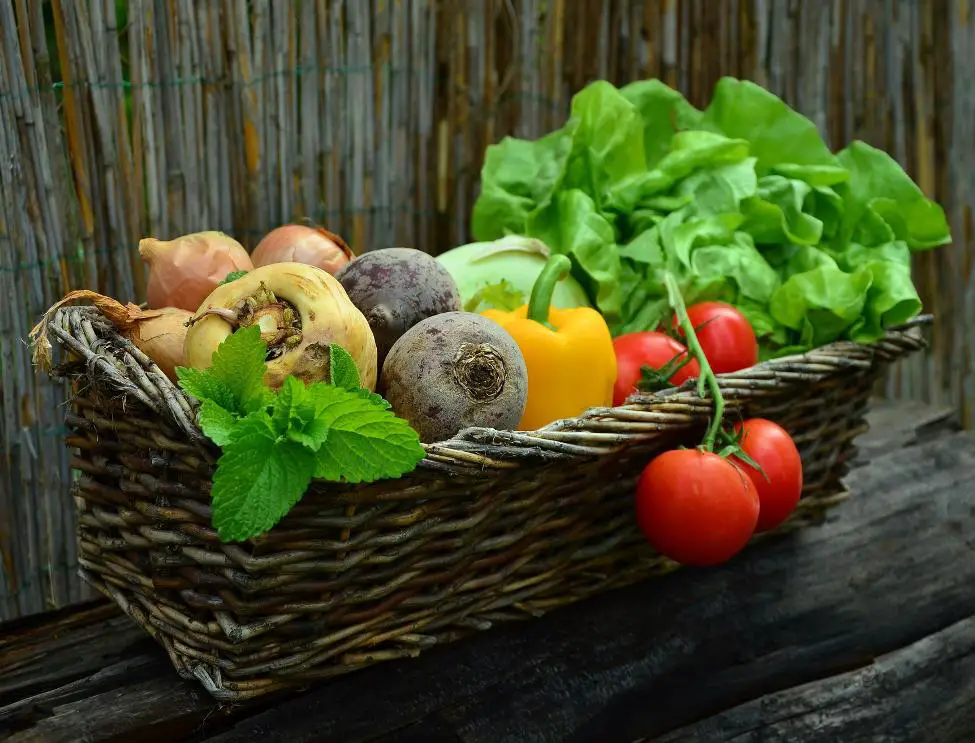When choosing what vegetables to grow in your home garden, it might be wise to consider their nutritional value. How amazing would it be to grow the most nutrient-rich foods for you and your family while also enjoying looking after your plants?
In this article, we will list the top 10 healthiest vegetables that you can grow at home.
Nutritious vegetables
All vegetables contain a set of micronutrients essential for our bodies. They are full of vitamins, minerals, and dietary fibre that are beneficial for our overall health. Of course, each individual has different requirements based on their diet, activity level, health conditions, and nutritional needs.
So which foods are best? These are some of our star performers:
Broccoli and Cabbages
Broccoli, cabbage, bok choi and Brussels sprouts are just some of the members of the Cruciferae family, so called because their flower resembles a cross. When eaten more than 3 times a week, they reduce the body’s iodine absorption, so top up with iodine-rich food such as shellfish, and seaweed or use iodised salt.
1. Broccoli
Broccoli is rich in the antioxidants beta carotene and vitamins C and E, which are thought to reduce the risk of cancer.
Rich in iron and folate, broccoli is a must for pregnant women (reducing the risk of spina bifida). Iron is easily absorbed due to broccoli’s high vitamin C content. It also helps to prevent anemia.
One to three servings a week of lightly steamed broccoli is ideal.
2. Cabbages
Cabbages are high in B vitamins and potassium and contain folate, iron, calcium and vitamins C and E.
Raw cabbage juice is a traditional medicine for peptic ulcers, speeding up healing time, although the juice is not that tasty. Raw cabbage or coleslaw is also beneficial but is not as potent as the juice.
High in antioxidants, cabbage appears to protect our cells from cancer.
3. Carrots
Carrots are the richest source of beta-carotene which reduces the incidence of cancer. Carrots appear to have a preventative effect against lung cancer.
Cooked carrot is best, as beta carotene is not destroyed with heat. The tough cell membranes in carrots are broken down by cooking, making the beta-carotene more easily absorbed. Carrots should be eaten with small amounts of fat for maximum effectiveness.
4. Onions
Onions have been used since ancient times as heart food. Cooked onion is very effective in thinning the blood, and preventing platelets in the blood from sticking together. This makes it an excellent preventative against blood clots and hence, heart disease and stroke.
5. Garlic
Garlic has a positive effect on our white blood cells, which the body uses to fight disease and therefore is excellent for boosting our immune systems.
The smelly part of garlic, allicin, is considered the most powerful component, so freshly crushed garlic is best.
Garlic is considered to have both antibacterial and antiviral properties.
6. Salad greens
Salad greens are rich in antioxidants, iron and folate. They are almost always eaten raw, as they do not store well, so it is best to eat them fresh. This means that we consume them when they are bursting with folate and iron.
Bitter greens such as endive, chicory and arugula stimulate the digestive fluids and boost liver function. Watercress, a member of the cabbage family, not only combines antioxidants with iron, folate and calcium but also boosts the immune system. The presence of mustard oils in watercress is thought to prevent skin problems by stimulating circulation and was traditionally used to treat eczema.
7. Peas
Green peas are a popular vegetable that contains a good amount of fibre and antioxidants. They are thought to help protect against some chronic illnesses, such as heart disease and cancer.
Strictly speaking, green peas are not vegetables. They are part of the legume family, which consists of plants that produce pods with seeds inside.
Peas contain lots of vitamins and minerals such as vitamins A, K, and C, thiamine, folate, manganese, iron and phosphorus, and they are high in protein content.
8. Kale
Kale is loaded with important micronutrients and antioxidants, it is one of the most nutritious leafy greens available rich in vitamins C, K and beta-carotene.
Kale also contains nutrients that can support eye health, weight management, heart health, and more.
Kale is very versatile in the kitchen as it works well in a wide range of recipes.
9. Beets
Beets are related to chard and spinach. But unlike them, we consume both beetroot and beet greens Each part of the beet plant has its own nutritional profile.
The beet’s leaves are low in carbohydrates and packed with many vitamins and minerals, such as vitamins A and C, folate, manganese and potassium.
Just one important thing to consider about beets is that they are high in oxalates, which can lead to kidney stones, so avoid beets if you have had kidney stones.
10. Tomatoes
Tomatoes are nutrient-dense plant food. They are high in vitamin K, calcium, and lycopene, which are beneficial to bone repair, strengthening, and increased bone mass.
There are many health benefits associated with tomatoes such as cancer prevention, blood pressure control, decreased risk of heart disease and diabetes control.
Gardening and growing our own food is beneficial to our mental health but it can also help improve our overall well-being by supplying us with nutrient-dense fresh food straight from our backyard garden.

